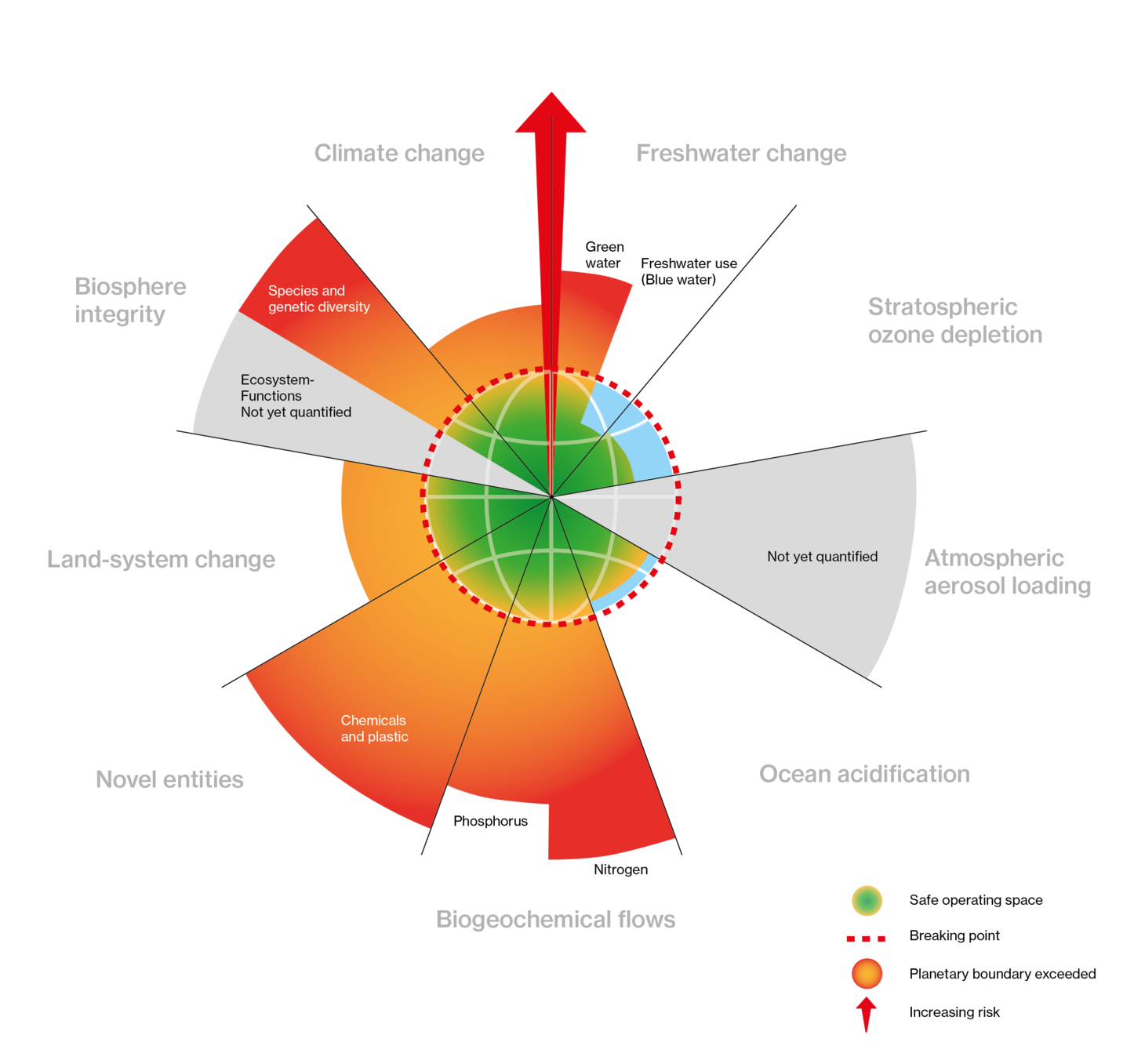
A new basis for climate policy
Economists often apply cost-benefit analyses to identify the best ways of using limited natural resources in the interest of maximising public welfare. When applied to the climate and biodiversity crises, however, these models fall short. Now, a broader approach has been put forward by researchers in a project financed by the Werner Siemens Foundation.
Global warming, the extinction of species, overconsumption of freshwater, ocean acidification: there seems to be no end to the ways in which humans are pushing the earth to its limits. However, the consequences of our actions are complex and difficult to measure—a statement that holds especially true, as not all changes in the earth’s systems are gradual or progressive. Indeed, if a physical system goes beyond a critical threshold, a so-called tipping point, sudden, irreversible change can be the result.
The massive ice sheets in Antarctica and Greenland are a prime example. Currently, these masses of glacial ice protrude several kilometres into the atmosphere, where the air is extremely cold. However, when rising global temperatures cause the ice sheets to start melting, their surface increasingly sinks to lower, and thus warmer, air layers. Once this occurs, the ratio of snowfall to snowmelt is reversed and, after a certain point, the melting process accelerates and can no longer be stopped. Another tipping point concerns regions with permafrost: when these frozen soils begin to thaw, the greenhouse gas methane is released into the air. Higher temperatures ensue—and the permafrost layers melt even faster.
Neglecting long-term costs
What these processes actually signify and what damage they will cause is extremely difficult to calculate. When making climate-policy recommendations for phasing out the use of fossil fuels, for example, welfare economics generally relies on cost-benefit analyses; the methods compare the economic benefits of fuel consumption with their climate-related costs. However, these approaches almost never address long-term climate impacts that are anything but simple to quantify (like those that occur once a tipping point has been crossed). “This means that costs are underestimated,” says Ottmar Edenhofer, Co-Director and Chief Economist at the Potsdam Institute for Climate Impact Research PIK in Potsdam and Director of the Mercator Research Institute on Global Commons and Climate Change MCC in Berlin.
Edenhofer also leads the FutureLab CERES project at PIK, which the Werner Siemens Foundation began funding in 2022. The researchers in the CERES project study the political economy of the global commons, and their central question addresses how nations can promote the sustainable management of natural resources such as the atmosphere, biosphere and oceans. To find the best solutions, it’s essential to have cost-benefit models that address all impacts.

Cost-benefit ratio that respects planetary boundaries
A research team led by Edenhofer and Johann Rockström, also Co-Director at PIK, have now further developed standard cost-benefit analyses to include additional key factors. They recently published their study in the journal Jahrbücher für Nationalökonomie und Statistik; their approach starts with traditional models and then integrates the concept of planetary boundaries, which was developed in 2009 in a team led by Rockström. Planetary boundaries concern nine dimensions of the earth’s system that form the basis of human life, including the climate, the state of forests and oceans as well as biodiversity. A threshold is set for each dimension, and exceeding this limit or the related tipping point endangers the stability of ecosystems—and thus the future of humanity.
To date, the planetary boundaries have either been ignored or understood as rigid targets. Moreover, the most inexpensive measures possible for meeting them have been selected, with little attention paid to the economic benefits that arise from preventing environmental harm. The new CERES model integrates the planetary boundaries in the cost-benefit analyses, and it incorporates all quantifiable costs of climate damage. When applied to fossil fuels, for example, this means the prerequisite for continued consumption of these resources is adhering to a temperature limit below the tipping point. It’s within this sphere of action and with these figures that the approach best suited to maximising public welfare is sought.
Climate policy to safeguard welfare
This new way of thinking not only ensures that economic models deliver more realistic analyses of the harm our actions are causing, Edenhofer says: “We’re also transferring the concept of planetary boundaries into a structure that makes it possible to manage and regulate our use of global public goods.” This is a decisive aspect of their method. “It’s not enough to say that there are planetary boundaries for emissions and temperatures,” he explains. “We also have to find the best possible ways to manage these limited public goods.”
Edenhofer believes there’s often a general impression that climate regulations interfere with our prosperity, that they limit ownership rights. However, common goods like forests, the atmosphere and clean water are valuable assets. “These natural assets must be managed just the same as tangible assets and human capital,” he says. “By continuing to devalue and consume them, we undermine our own prosperity. That’s why climate policy means nothing other than safeguarding our general welfare.”
The new model creates an overarching framework for the CERES project, as Edenhofer explains. One aspect of the research is gathering the necessary scientific data for working with their model; another is communicating the new approach to political and economic decision-makers. “We also need to understand what prevents decision-makers from moving in this direction,” Edenhofer says. “These are our next steps.”



